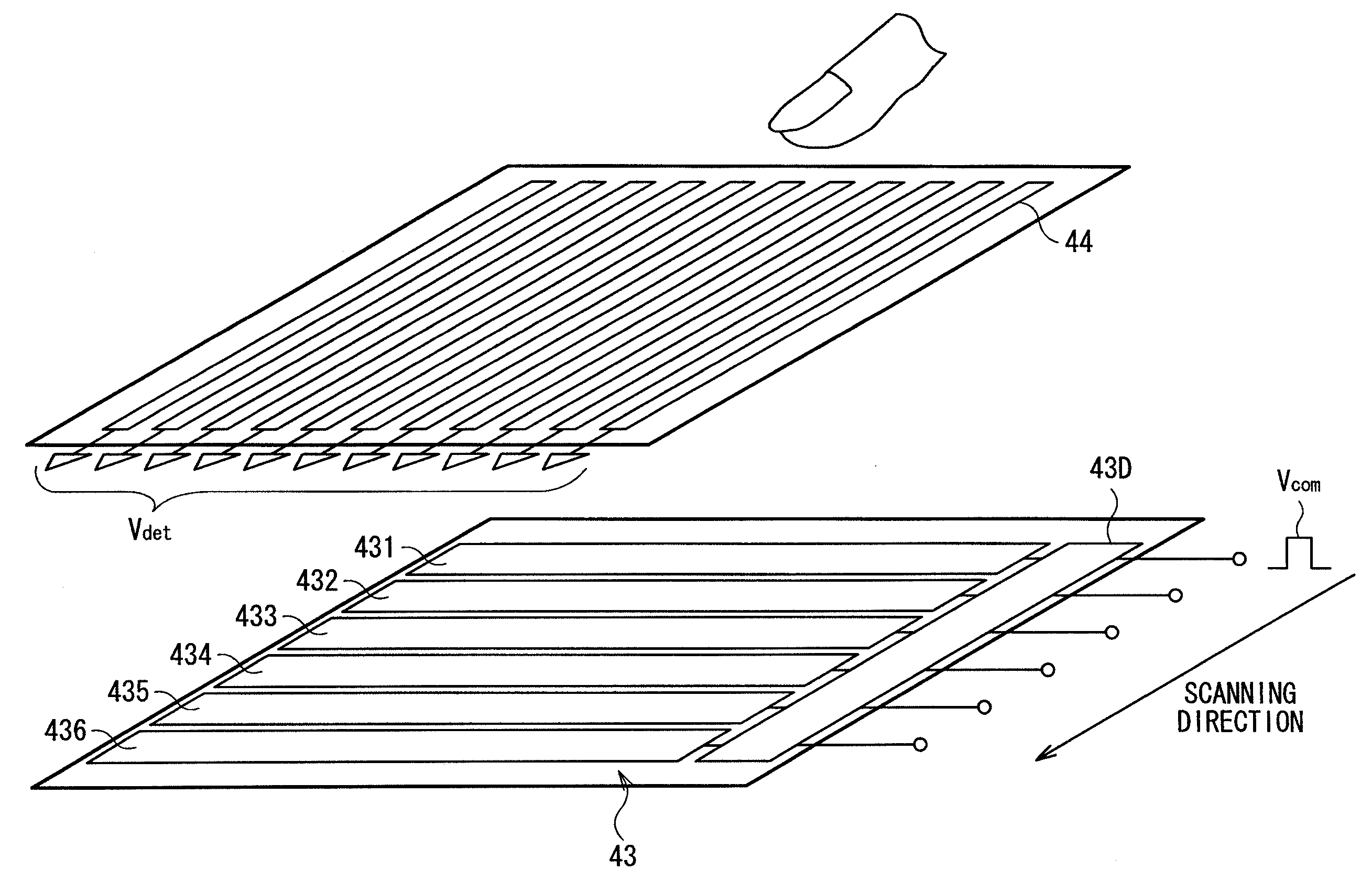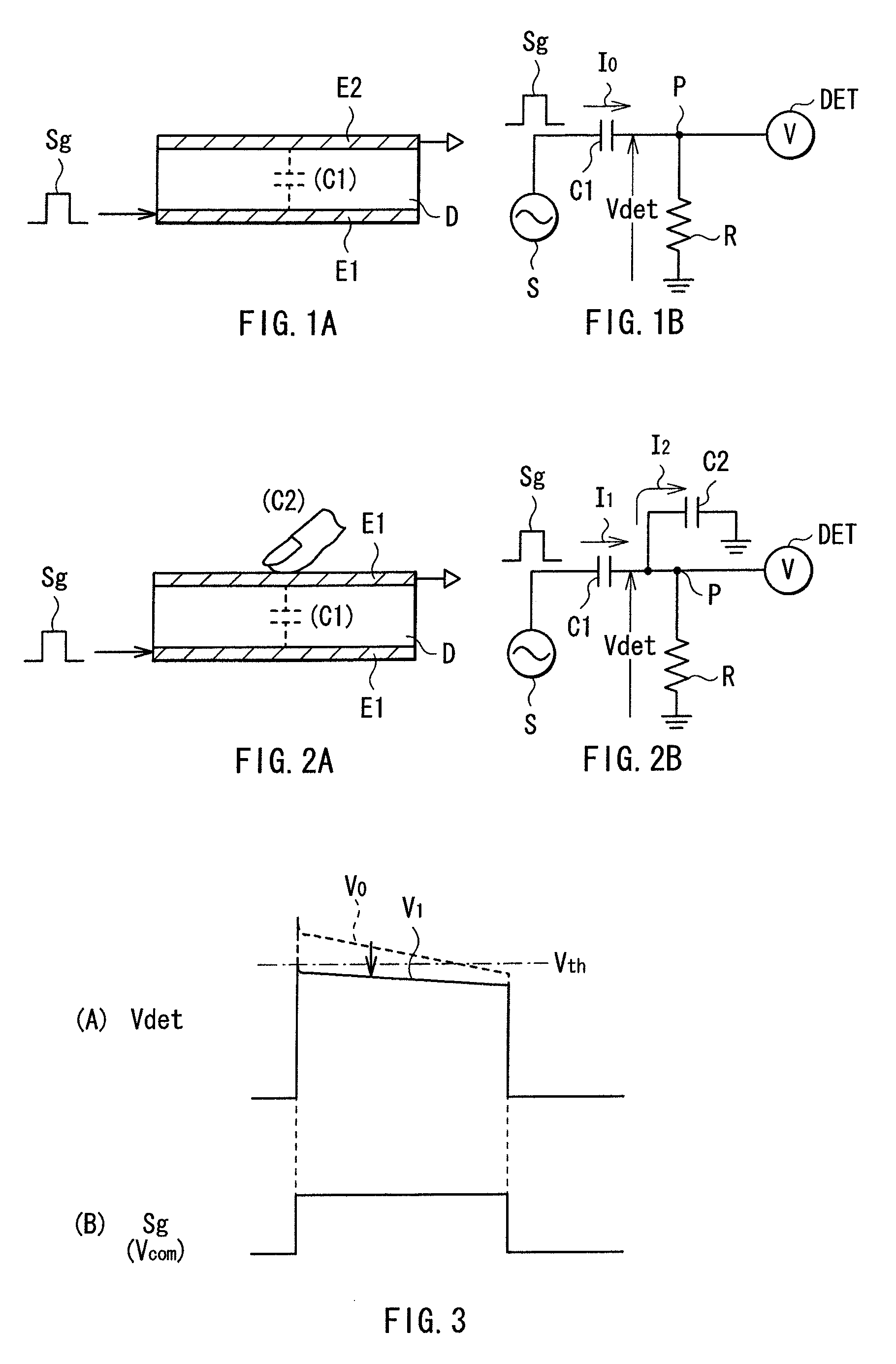Display device and electronic unit
- Summary
- Abstract
- Description
- Claims
- Application Information
AI Technical Summary
Benefits of technology
Problems solved by technology
Method used
Image
Examples
first embodiment
1. First Embodiment
Configurational Example of a Display Device 1
[0056]FIG. 4 illustrates a cross sectional configuration of a main part of the display device 1 with a touch sensor according to a first embodiment of the present invention. In the display device 1, a liquid crystal display element is used as a display element, a part of an electrode (a common electrode 43, which will be described later) that is originally provided in this liquid crystal display element and a drive signal for display (common drive signal Vcom, which will be described later) are used, thereby a capacitance type touch sensor is configured.
[0057]As illustrated in FIG. 4, the display device 1 includes a pixel substrate 2, an opposed substrate 4 facing the pixel substrate 2, and a liquid crystal layer 6 inserted between the pixel substrate 2 and the opposed substrate 4.
[0058]The pixel substrate 2 includes a TFT (thin film transistor) substrate 21 serving as a circuit substrate and a plurality of pixel electr...
second embodiment
2. Second Embodiment
[0095]Next, a second embodiment of the present invention will be described. The second embodiment differs from the above-described first embodiment in that a liquid crystal element in a lateral-electric-field mode is used as a display device.
[Example of the Configuration of a Display Device 1B]
[0096]FIG. 16 illustrates a cross-sectional configuration of a main part of the display device 1B with a touch sensor according to the present embodiment. FIGS. 17A and 17B illustrate details on the configuration of a pixel substrate (pixel substrate 2B that will be described later) in the display device 1B. FIG. 17A is a cross sectional view of the configuration, while 17B is a plan view of the configuration. FIGS. 18A and 18B schematically illustrate the perspective configuration of the display device 1B. Incidentally, in these figures, the elements identical to those of the first embodiment are indicated by the same reference characters as those of the first embodiment, ...
modification 1
(Modification 1)
[0119]FIG. 22 is a perspective diagram that illustrates the configuration of a main part (common electrode and detection-electrode-for-sensor) of a display device with a touch sensor according to Modification 1. As illustrated in FIG. 22, the common electrode 43 may be formed as a single solid electrode, and at the same time, the detection-electrode-for-sensor 44 may be formed as a plurality of individual electrodes arranged in a matrix form. In this case, it is possible to immediately identify a touched position based on the detection signal Vdet from each of the individual electrodes configuring the detection-electrode-for-sensor 44.
PUM
 Login to View More
Login to View More Abstract
Description
Claims
Application Information
 Login to View More
Login to View More - R&D
- Intellectual Property
- Life Sciences
- Materials
- Tech Scout
- Unparalleled Data Quality
- Higher Quality Content
- 60% Fewer Hallucinations
Browse by: Latest US Patents, China's latest patents, Technical Efficacy Thesaurus, Application Domain, Technology Topic, Popular Technical Reports.
© 2025 PatSnap. All rights reserved.Legal|Privacy policy|Modern Slavery Act Transparency Statement|Sitemap|About US| Contact US: help@patsnap.com



